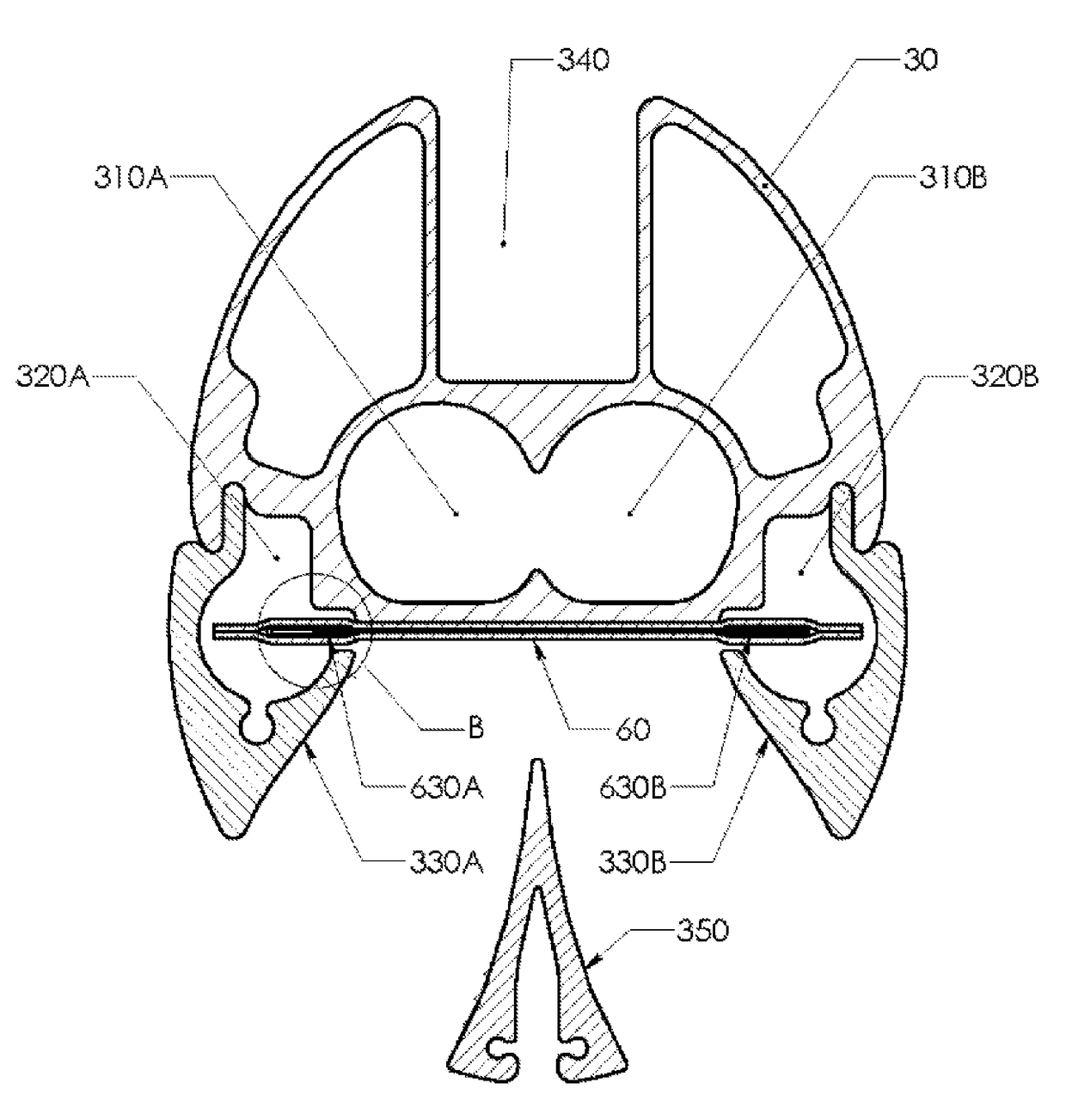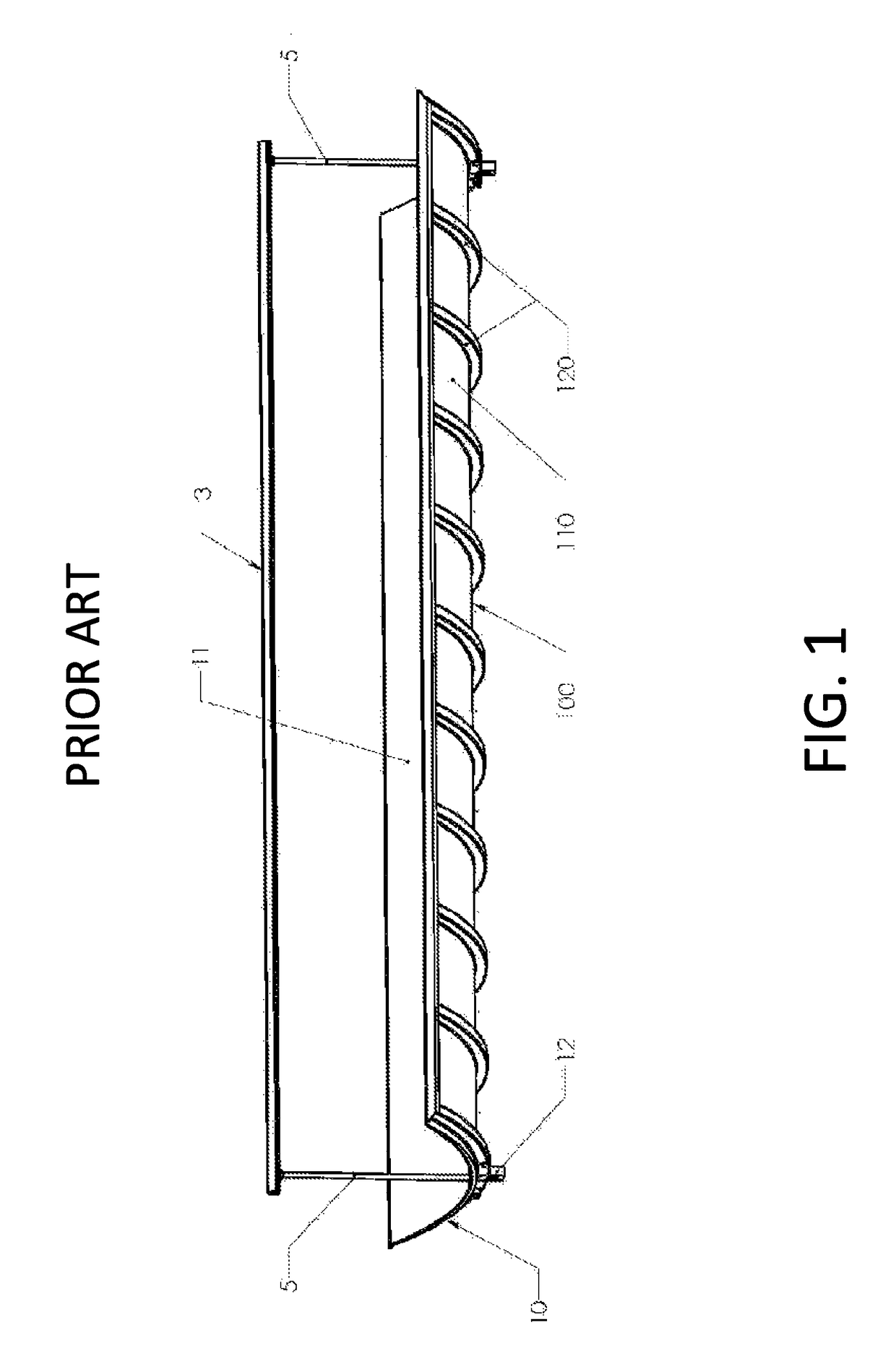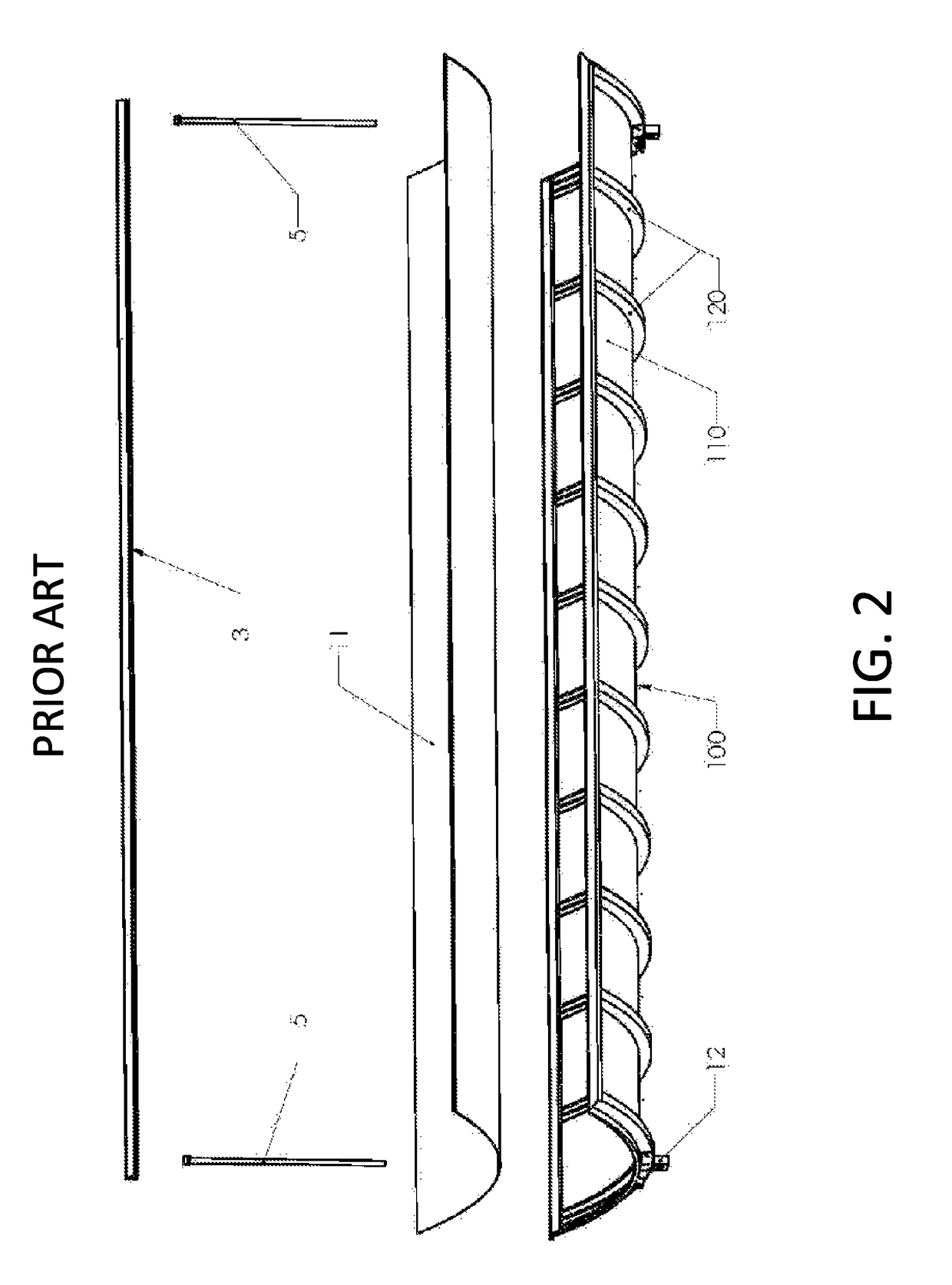Structurally integrated parabolic trough concentrator with combined PV and thermal receiver
a concentrator and parabolic trough technology, applied in the direction of solar heat collectors, hybrid energy generation, lighting and heating apparatus, etc., can solve the problems of significant disadvantages of being material intensive and therefore costly and uncontrollable, and less effective than a typical active cooling system, so as to reduce the cost of existing structures, offset the cost, and dissipate hea
- Summary
- Abstract
- Description
- Claims
- Application Information
AI Technical Summary
Benefits of technology
Problems solved by technology
Method used
Image
Examples
Embodiment Construction
[0091]Whereas it is desirable to use parabolic troughs for concentrated solar for CPV and CPVT applications to reduce cost and increase efficiency, in general as compared to non-concentrated. It is necessary to improve on the cost and performance of the state of the art parabolic trough concentrator for both thermal and CPV applications.
[0092]This invention provides for improvements in the structure of parabolic troughs and the integration of components to increase strength and performance while reducing weight. This invention also provides for improvements in the focusing of light and the distribution of concentrated light over the face of the PV cells. The improvements of the present invention may be applied to many configurations of basic trough designs such as the those proposed in: U.S. patent application Ser. No. 12 / 365,549 Solar Trough and Receiver; U.S. Pat. No. 4,135,493 Parabolic Trough Solar Energy Collector Assembly; or WIPO publication number WO 2007 / 076578 A1.
[0093]Rea...
PUM
 Login to View More
Login to View More Abstract
Description
Claims
Application Information
 Login to View More
Login to View More - R&D
- Intellectual Property
- Life Sciences
- Materials
- Tech Scout
- Unparalleled Data Quality
- Higher Quality Content
- 60% Fewer Hallucinations
Browse by: Latest US Patents, China's latest patents, Technical Efficacy Thesaurus, Application Domain, Technology Topic, Popular Technical Reports.
© 2025 PatSnap. All rights reserved.Legal|Privacy policy|Modern Slavery Act Transparency Statement|Sitemap|About US| Contact US: help@patsnap.com



